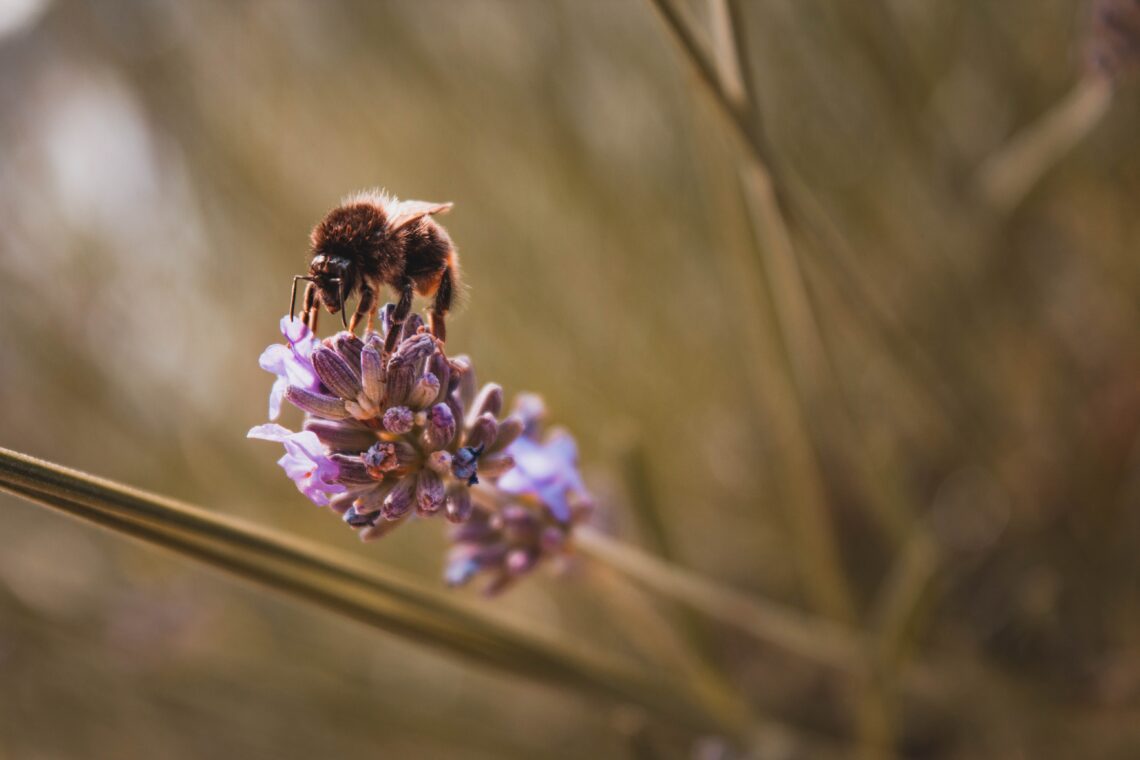
The buzz around bee appreciation
How initiatives in the GTA are acknowledging and supporting the importance of bees
People can easily recognize the environmental contribution that large animals such as wolves, deer and bears provide. This translates to individuals caring for their well-being and fighting to preserve their populations. But, people often forget about the little power-house pollinators. Bees are responsible for one out of every three bites of food.
Sarah MacKell is the lead biologist of Wildlife Preservation Canada’s Native Pollinator Initiative. They say bees are necessary for more than just the production of honey.
“Bees pollinate many food-producing plants. Some plants are completely reliant on them, and others heavily depend on them because their yields are increased by bees,” says MacKell. “Without pollination, these plants would not be able to reproduce and produce the fruits, nuts and vegetables that we rely on.”
However, despite their importance, the bee population continues to decrease. These issues depend on things like location, what people plant and the harmful chemicals they use to preserve their plants.
MacKell says “Bee populations are declining for many reasons, including habitat loss, pathogens and parasites from managed bees, such as bumble bees and non-native honey bees, agricultural chemicals and climate change.”
Habitat loss can be seen more in urban areas. As density continues to rise in people, buildings, roads and concrete, bumble bee colonies in Toronto lose their natural habitats. These include spaces such as gardens, farmlands and meadows.
MacKell clarifies that outside of habitat loss, dense urban spaces can hinder bee populations. This is due to urban warming bringing about high temperatures that are intolerable for many species.
Annemarie Baynton, the program manager of PollinateTO within the City of Toronto’s Environment and Energy Division, says that high temperatures can affect other pollinator habitats in addition to bumble bees, such as monarch butterflies.
This is especially unfortunate because crop production is not just essential for rural farms. Mackell says that with the rise of necessary initiatives to improve urban food security, urban spaces like Toronto need bees.
“We need thriving bee populations in these urban areas to ensure these community efforts have high enough yields to meet their goals,” MacKell says.
This allows places such as Toronto to focus on doing better for the bee population. The PollinateTO program aims to motivate individuals and communities in Toronto to build pollinator-friendly gardens for these pollinators.
“PollinateTO-funded projects will support neighbourhood beautification and well-being, and contribute to the creation of resilient ecosystems and enhanced urban biodiversity,” says Baynton.
Pollinator-friendly gardens attract bees and other pollinators because they can access the pollen they need to survive. They also contribute to food production.
“By planting native plants, you will be providing much-needed habitat that native pollinators need to survive. Native plants provide pollen and nectar for food, as well as places to nest and overwinter,” says Baynton.
This is why PollinateTO only provides funding to gardens that plant native plants and avoid invasive plant species.
The Bumble Bee Recovery program with the Native Pollinator Initiative, partially takes place in Toronto, in addition to contributing to the development of appropriate habitats for bees.
“The Bumble Bee Recovery program combines conservation breeding, annual large-scale population monitoring, expert research, community science, and education and outreach to ultimately increase populations of declining bumble bee species through releases and identify and address causes of bumble bee population decline,” MacKell says. “We are the only program in Canada breeding declining bumble bee species for future release.”
The Bumble Bee Recovery program conducts annual spring queen surveys for population monitoring. They also conduct queen collections for conservation breeding in the GTA.
Luckily, those who are not able to contribute scientific research can still support and appreciate bees.
Baynton says, “Pollinator habitats can be created almost anywhere: in parks, yards, apartment buildings, schools, faith centres, community gardens and more.”
In addition to planting native flowers that bloom in the spring, people can also create helpful habitats on the ground, which require little effort.
“Bees can live in many places, including underground. Most bees live underground in brush piles or logs, pithy stems and long grass,” says MacKell. “Help bees nest and overwinter by being a messy gardener and leaving sections of your yard with undisturbed soil, brush piles or logs and long grass.”
Supporting the bee population can bring Toronto communities together to engage in discussions about biodiversity in the city.
“Each PollinateTO project is required to educate and engage their community in some way. We hope that each PollinateTO project educates and inspires others, resulting in more actions taken to benefit pollinators. We are trying to create a pollinator stewardship movement across Toronto and beyond,” Baynton says.
Educating the community on how to properly care for the bee population motivates others to re-evaluate their own agricultural practices.
It can also encourage people to spread the word about bees to other communities, near and far.
About the author
Grace Nelson-Gunness is a reporter for Youth Mind. She enjoys watching Criminal Minds or reading a suspenseful horror-thriller novel while drinking a vanilla latte.







